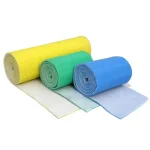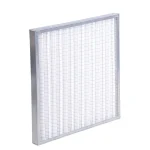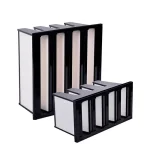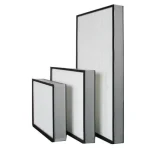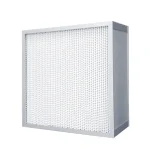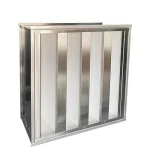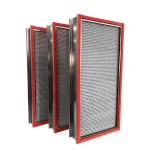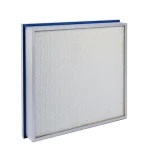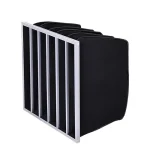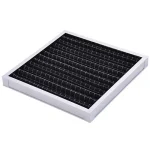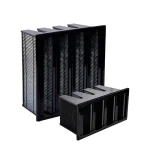Pharmaceuticals and Biotechnology
Contaminated air can compromise product safety, efficacy, and integrity, leading to severe consequences, including product defects, regulatory penalties, and potential harm to patients.
Stringent regulations, such as Good Manufacturing Practices (GMP) and guidelines from the FDA and ISO, make effective air filtration systems essential to control and eliminate airborne pollutants in these critical environments.
Contaminants in Pharmaceuticals and Biotechnology
Controlling contaminants is vital in the pharmaceutical and biotechnology industries to ensure product safety and quality.
Particulate Matter
1. Dust: Small particles that can carry microorganisms or chemicals, potentially harming sterile environments.
2. Spores: Resilient fungal spores that can grow and breed in production areas, increasing contamination risks.
3. Microorganisms: Airborne bacteria and viruses that can infiltrate cleanrooms, compromising product sterility.
Microbial Contaminants
1. Bacteria: Even small amounts can multiply rapidly, leading to product spoilage and serious health risks.
2. Viruses: Particularly concerning in biotechnology, where they can disrupt processes and threaten product safety.
3. Fungi: Molds and yeasts can cause spoilage and health risks, making their control essential.
Chemical Contaminants
1. Volatile Organic Compounds (VOCs): Organic chemicals that can contaminate products and interfere with manufacturing processes.
2. Gases: Harmful gases like ammonia or chlorine can react with sensitive materials, posing risks to both products and worker safety.
Critical Areas Requiring Air Filtration
Effective air filtration is essential in several key areas within the pharmaceutical and biotechnology industries to maintain product safety and quality:
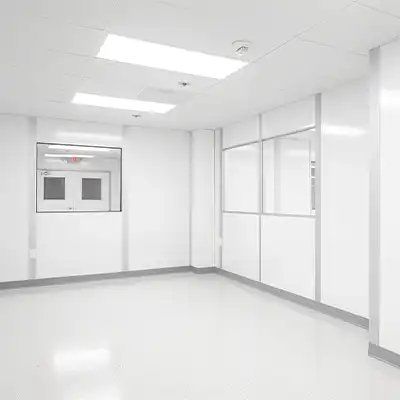
Cleanrooms
Cleanrooms are controlled environments designed to minimize the presence of airborne particles, ensuring a sterile and contaminant-free space for critical processes.
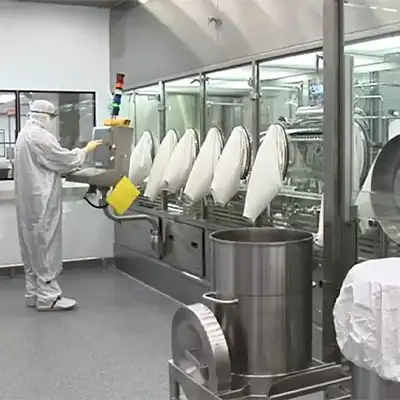
Sterile Production Areas
Air filtration systems in Sterile Production Areas are crucial to preventing airborne bacteria, viruses, and fungi from entering the production space.
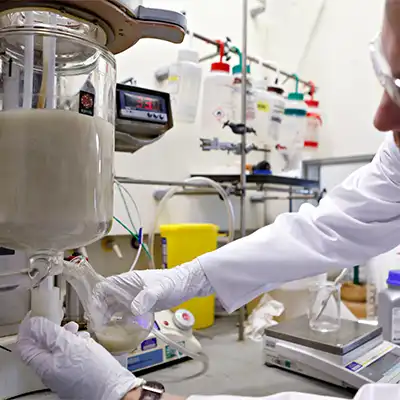
R & D Laboratories
Air filtration prevents external contaminants from affecting experimental results, ensuring reliable and consistent testing in R&D labs.
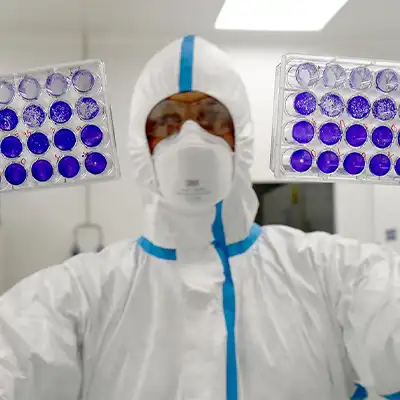
Biotechnology Production Facilities
Biotechnology production often involves working with live organisms and biologically derived products, which are highly sensitive to contamination.
HEPA filters remove 99.97% of particles 0.3 microns in size, while ULPA filters remove 99.999% of even smaller particles. These filters are critical for maintaining the required cleanroom standards.
Types of Air Filters Used in Pharmaceuticals and Biotechnology
Pre-Filters
Pre-filters are the first line of defense in air filtration systems. They capture larger particles such as dust, fibers, and hair, preventing them from reaching the more sensitive filters downstream.
By removing these large particulates, pre-filters extend the lifespan and efficiency of HEPA and ULPA filters, reducing maintenance costs and ensuring optimal performance.
HEPA Filters (High-Efficiency Particulate Air Filters)
HEPA filters are essential in environments requiring high levels of air purity. They are designed to remove at least 99.97% of airborne particles as small as 0.3 microns, including dust, pollen, mold, bacteria, and other airborne contaminants.
HEPA filters are widely used in cleanrooms, sterile production areas, and laboratories to maintain the necessary air quality standards and protect sensitive processes.
Activated Carbon Filters
Activated carbon filters are specialized filters designed to remove volatile organic compounds (VOCs), gases, and odors from the air.
These filters work by adsorbing chemical contaminants onto the surface of activated carbon granules, effectively removing them from the air stream.
Challenges and Solutions in Air Filtration
Air filtration in the pharmaceutical and biotechnology industries comes with its own set of challenges. Addressing these challenges is crucial to maintaining the high standards of air quality required in these sensitive environments.
Handling High Contamination Loads
Challenge: Facilities that deal with high contamination loads, such as those involving heavy particulate matter or high microbial presence, require robust filtration systems.
The challenge lies in maintaining filtration efficiency without frequent filter replacements, which can be costly and disruptive.
Solution: The use of multi-stage filtration systems, starting with pre-filters to capture large particles, followed by HEPA or ULPA filters for finer contaminants, can effectively handle high contamination loads.
Regular maintenance and monitoring, along with predictive maintenance technologies, can also help in managing these loads efficiently.
Balancing Air Quality with Energy Efficiency
Challenge: High-efficiency filters like HEPA and ULPA can create significant pressure drops, requiring more energy to maintain airflow. This presents a challenge in balancing the need for high air quality with the desire to minimize energy consumption and operational costs.
Solution: Advances in filter design and materials have led to the development of low-resistance filters that provide high levels of filtration with lower energy consumption. Additionally, optimizing HVAC system design and incorporating energy recovery ventilators can help balance air quality with energy efficiency.
Adapting to Emerging Contaminants
Challenge: As new contaminants emerge, such as novel microorganisms or chemical compounds, existing filtration systems may not be adequate to address these threats. The challenge is to stay ahead of these emerging contaminants to ensure continued protection.
Solution: Continuous research and development in filter technology are essential to adapting to new contaminants. This includes developing filters with enhanced adsorption capacities for new chemical contaminants or improved microbial filtration. Implementing smart filtration systems that monitor air quality in real-time and adjust filtration parameters can also help in responding to emerging threats.
Air filtration is a critical component in maintaining the safety, efficacy, and quality of pharmaceutical and biotechnology products. With ongoing innovations and a focus on regulatory compliance, the industry is well-equipped to meet the challenges of today and the future, ensuring that clean and controlled environments remain a standard in these high-stakes fields.
